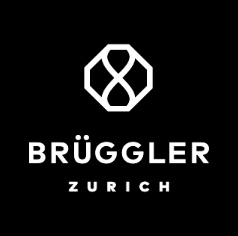This article summarises the structure, regulation, and terminology of the U.S. independent wealth-management industry. All factual statements are based on verifiable public data from the U.S. Securities and Exchange Commission (SEC), FINRA, and recognised industry surveys. Publication and event dates are stated where possible.
For readers seeking a deeper analysis of the economic and strategic forces shaping this model, please continue with the companion article Strategic Dynamics of U.S. Independent Wealth Management.
Core definition
In the United States, independent wealth management refers to advisory firms and professionals who deliver portfolio management, financial planning, and investment advice while remaining independent of large brokerage houses or banks. The formal regulatory label is Registered Investment Adviser (RIA), as defined under the Investment Advisers Act of 1940.
Key models and terms
| Variant | Regulator | Compensation | Main features |
|---|---|---|---|
| Registered Investment Adviser (RIA) | SEC / State regulators | Fee-only or fee-based (AUM, hourly, retainer) | Fiduciary duty; direct client relationship; full disclosure on Form ADV. |
| Independent Broker-Dealer (IBD) | FINRA | Commissions and/or advisory fees | Advisers act as independent contractors under a broker-dealer licence. |
| Hybrid RIA | SEC + FINRA | Mix of fees and commissions | Dual registration; often used by teams leaving wirehouses. |
| Fee-Only Financial Planner | Usually SEC / State | Flat or hourly fee | Focus on holistic planning; no product commissions. |
| Multi-Family Office (MFO) | Varies – usually SEC if managing assets | Retainer or AUM | Serves ultra-high-net-worth families; integrates tax, estate and philanthropy. |
Regulatory foundation
- SEC registration: Required for firms managing over USD 100 million RAUM; smaller firms register with state authorities.
- Fiduciary standard: RIAs must place client interests first and disclose conflicts (SEC Release IA-5248, 2022).
- Broker-dealer standard: Governed by FINRA’s Regulation Best Interest (Reg BI), distinct from fiduciary duty.
Industry scale
According to the SEC’s Investment Adviser Industry Snapshot 2024 (published June 2024), there were 15 376 RIA firms overseeing USD 128 trillion RAUM. Roughly half are independent boutiques managing under USD 1 billion each. Independent broker-dealers account for about USD 7 trillion (FINRA 2024 Fact Book).
Why advisers go independent
- Fiduciary alignment: Control of client relationships and duty to act in clients’ best interests.
- Ownership and equity: Advisers build enterprise value rather than sharing revenue grids with wirehouses.
- Technology freedom: Access to open-architecture platforms and fintech integrations (e.g. Orion, Envestnet, Black Diamond).
- Brand autonomy: Freedom to position a boutique brand for specific client segments.
Major independent platforms and custodians
Independent RIAs typically custody client assets at Charles Schwab Advisor Services, Fidelity Institutional, and Pershing. These custodians provide trading, reporting, and compliance infrastructure while leaving advisory discretion to the RIA.
Economic models
- AUM-based fees: 0.25 % – 1.0 % p.a. (median 0.85 % per Cerulli Associates 2024).
- Flat or retainer fees: Growing among planning-centric RIAs; transparency favoured by younger clients.
- Hybrid compensation: A Combination of advisory fees and insurance or lending commissions in hybrid set-ups.
Trends 2025
- Consolidation: Private-equity-backed aggregators (e.g., Focus Financial, Mercer Advisors, Wealth Enhancement Group) continue to acquire smaller RIAs.
- Succession planning: Ageing founders drive M&A and equity-partner transitions.
- Technology integration: API-based CRM + PMS + client-portal ecosystems replacing legacy systems.
- Regulatory scrutiny: SEC focuses on cybersecurity, off-channel communications, and fee transparency (Risk Alert Feb 2025).
Comparison with traditional wirehouses
| Feature | Independent RIA | Wirehouse Broker |
|---|---|---|
| Client obligation | Fiduciary (best interest) | Suitability (Reg BI) |
| Brand ownership | Adviser-owned | Firm-owned |
| Product shelf | Open architecture | Proprietary lists |
| Revenue grid | Direct fees | Commission & payout schedule |
| Custody | Third-party (Schwab, Fidelity, Pershing) | In-house custody |
Challenges
- Compliance burden: RIAs must maintain policies, Form ADV disclosures, and annual reviews (Rule 206(4)-7).
- Scale economics: Below USD 150 million AUM, margins tighten due to tech and legal costs.
- Talent retention: Equity sharing and career paths help retain younger advisers.
- Cybersecurity: Growing SEC enforcement and vendor due diligence requirements (2024 Guidance GF-2).
Practical summary
The U.S. independent wealth-management sector is mature, highly regulated and expanding through organic growth and M&A. The Registered Investment Adviser (RIA) framework remains the cornerstone, with hybrid and family-office models serving adjacent segments. For professionals leaving wirehouses, independence offers fiduciary credibility, equity potential and brand freedom — balanced by greater compliance responsibility.
Sources (verified)
- U.S. Securities and Exchange Commission, Investment Adviser Industry Snapshot 2024, June 2024 (sec.gov).
- FINRA, 2024 Fact Book, August 2024 (finra.org).
- Cerulli Associates, U.S. RIA Market 2024 Report, September 2024 – industry benchmark data.
- SEC Risk Alert “Cybersecurity and Marketing Rule Observations”, February 2025 (sec.gov).
Bottom line
Independent wealth management in the U.S. is defined by fiduciary duty, open architecture, and entrepreneurial ownership. The term “independent RIA” has become the industry’s primary designation, distinguishing fee-based fiduciaries from commission-driven brokers. As technology and regulation evolve, the independent model continues to gain credibility and market share.
Next: Read Part II – Strategic Dynamics of U.S. Independent Wealth Management for a comparative and analytical perspective on the RIA model.




